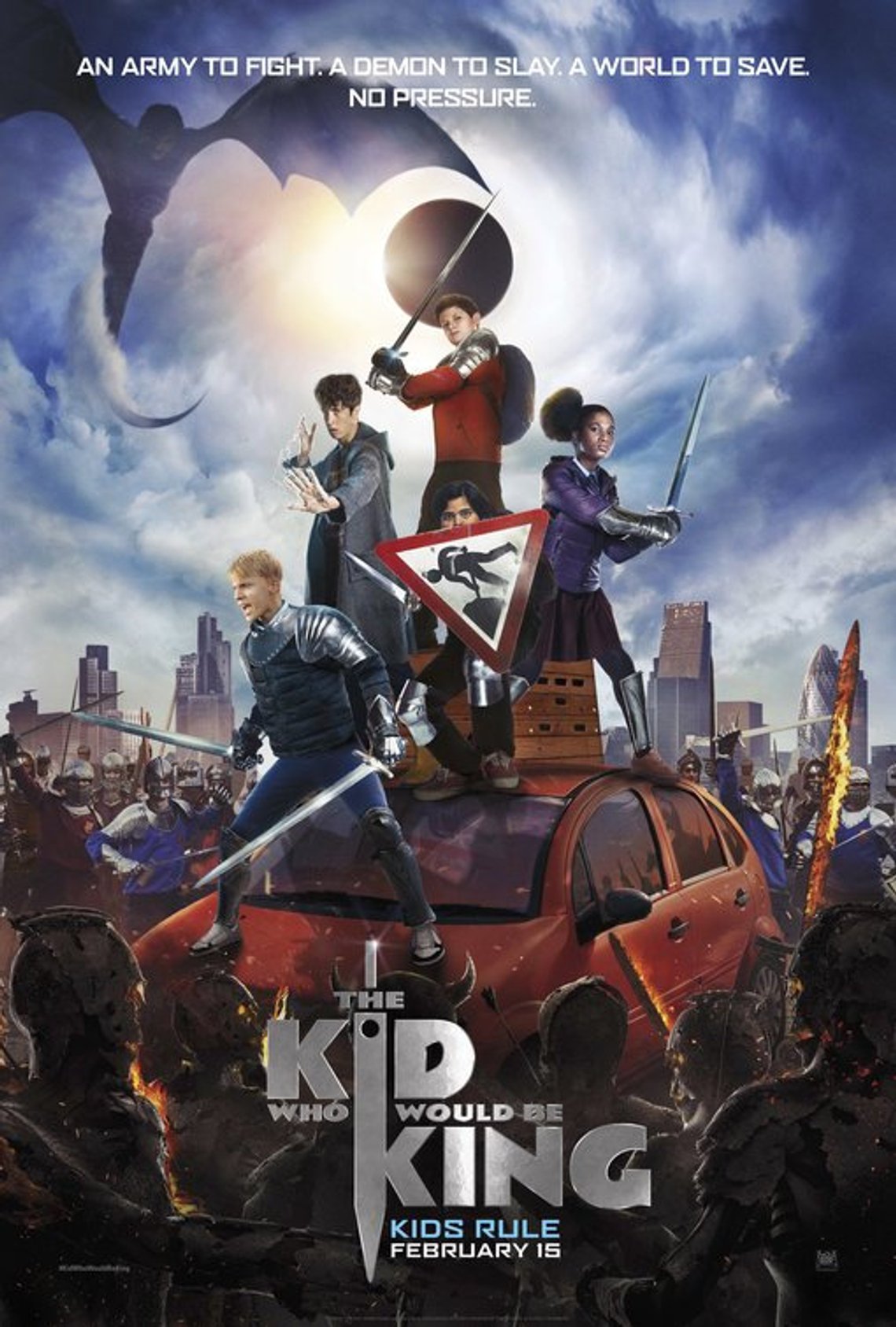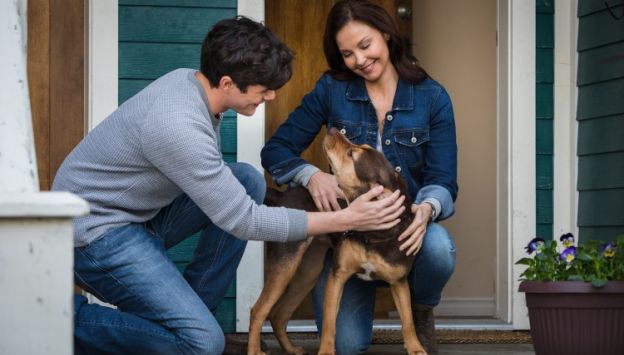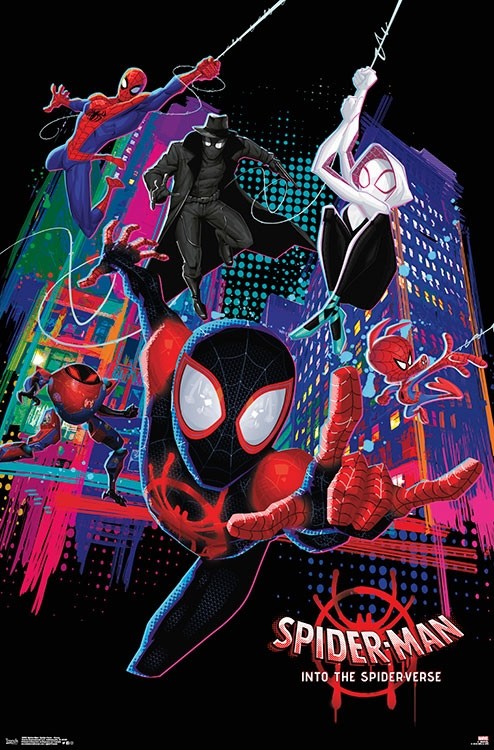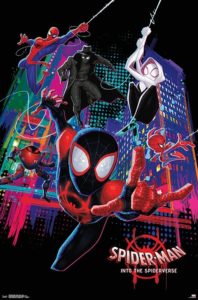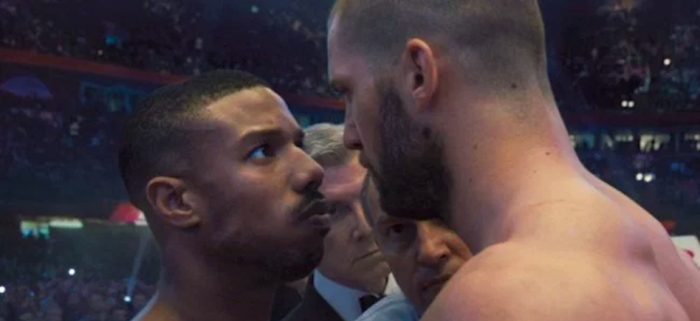The Kid Who Would Be King
Posted on January 24, 2019 at 5:32 pm
B| Lowest Recommended Age: | 4th - 6th Grade |
| MPAA Rating: | Rated PG for fantasy action violence, scary images, thematic elements including some bullying, and language |
| Profanity: | Some schoolyard language |
| Alcohol/ Drugs: | None |
| Violence/ Scariness: | Extended fantasy peril and violence with monsters, characters injured and killed, beheading, swords, car crashes, references to mental illness and alcoholism of a parent, disturbing images |
| Diversity Issues: | Diverse characters |
| Date Released to Theaters: | January 25, 2019 |
| Date Released to DVD: | April 15, 2019 |
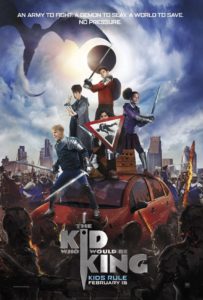
On the run from Lance and Kaye himself, Alex hides out in a construction site, where he sees a sword stuck in a stone and pulls it out. At home, he finds a book his father had given him about the story of King Arthur, inscribed to him: To Alex, the Once and Future King. At school, a gawky new student named “Merton” is so strange he seems like good news to Bedders, who tells Alex he will deflect attention from them as the formerly most tempting targets at the school. But “Merton” is in fact Merlin (Angus Imbrie), who is actually very old but looks like a teenager because he is living backwards, except when he flickers back into his actual age and looks like Patrick Stewart.
Merlin tells Alex that the sword is King Arthur’s Excalibur, to be used to defeat Morgana (Rebecca Ferguson), who has been waiting for the world to achieve a level of turmoil that would make it possible for her to return. If you’ve read the news lately, you will not be surprised to learn that the necessary level of turmoil has been achieved and surpassed.
Alex decides he has to find his father for guidance, and he asks Lance and Kaye to join him, noting that their names recall King Arthur’s closest allies, Sir Lancelot and Sir Kay, as well as Bedders/Sir Bedivere. Lance and Kaye may be bullies, but they are strong and brave, and may be persuaded to follow the Chivalric Code (or pretend to).
Meanwhile, Morgana is getting stronger, and she sends flaming skeleton emissaries on horseback to attack Alex. Merlin introduces the group to the real purpose of Stonehenge and the other prehistoric standing stone structures throughout England (think of them as subway stations) and gives them a sword-fighting tutorial with trees come to life in one of the movie’s best scenes.
Alex is very familiar with “chosen one” stories like Harry Potter and Percy Jackson, where the hero is “chosen” in significant part from his biological heritage, and he believes that the gift from the father he never knew is proof of his own heritage as the reason for his fitness to carry Excalibur. The movie makes it clear that this is not the case. Alex will have to think about what it is that made him able to get the sword and how he can use those qualities to defeat Morgana.
Both Serkis and Imrie have some hefty heritages of their own, one the son of motion-capture wizard Andy Serkis and the other the son of “Calendar Girls” and “The Best Exotic Marigold Hotel” star Celia Imrie. Like the other young cast members, they have appealing screen presences, and Imrie in particular has loads of lanky charm, wearing a Led Zeppelin 1975 tour t-shirt and snarfing down the 21st century equivalent of his elixir. Director Joe Cornish of the cheeky “Attack the Block” keeps things lively, with plenty of humor to balance the action and a rousing finale with the entire school joining the fight.
Parents should know that this film has extensive fantasy peril and violence, with some scary images and monsters, chases, bullies, car crashes, a beheading, brief comic nudity (non-explicit) and some schoolyard language.
Family discussion: Why was Alex the right person to have the sword? Why did he choose Lance and Kaye to help him? Could you follow the movie’s version of the Chivalric Code?
If you like this, try: “A Kid in King Arthur’s Court,” “The Sword in the Stone,” and “Camelot”

